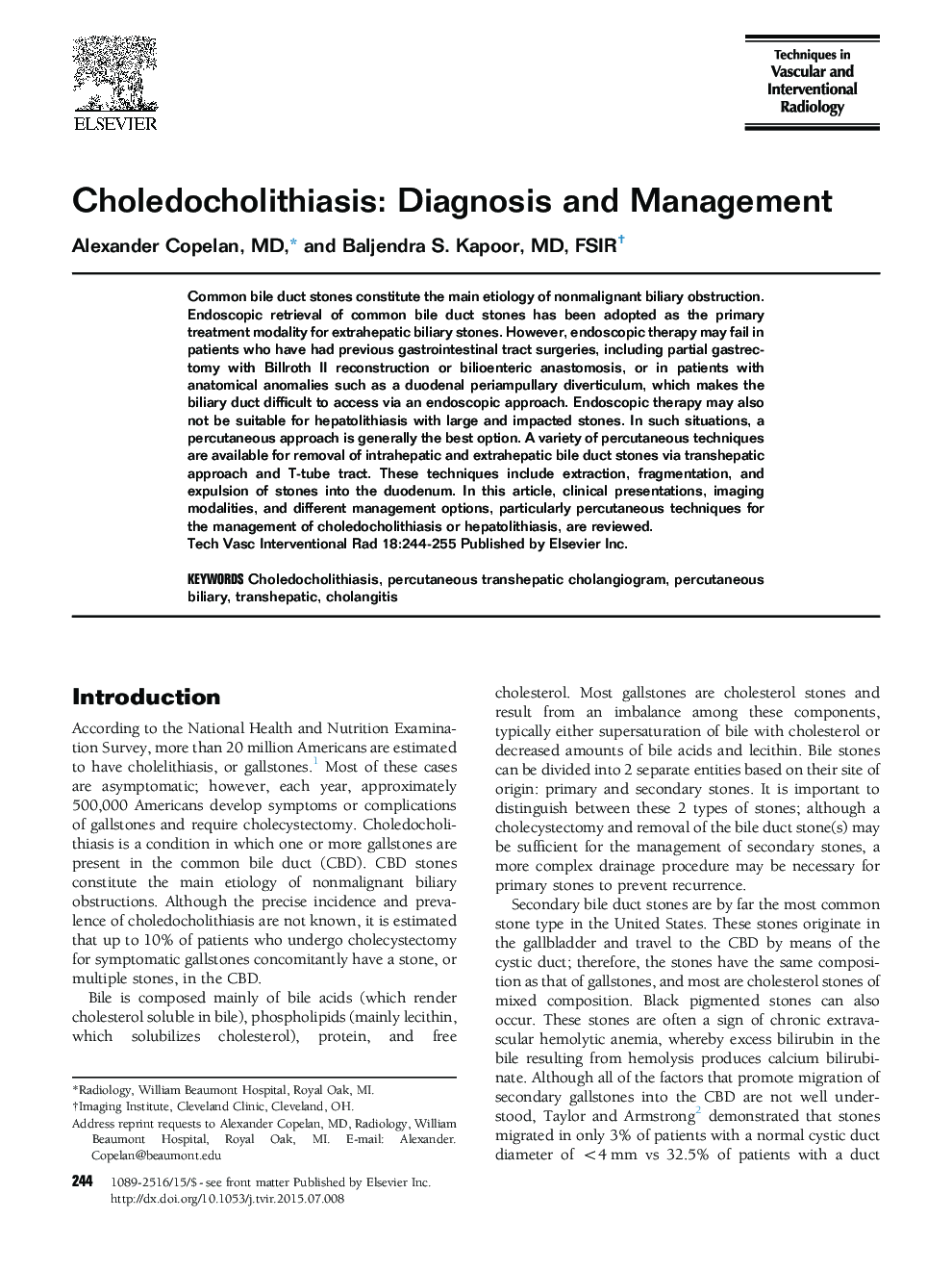| Article ID | Journal | Published Year | Pages | File Type |
|---|---|---|---|---|
| 4251509 | Techniques in Vascular and Interventional Radiology | 2015 | 12 Pages |
Common bile duct stones constitute the main etiology of nonmalignant biliary obstruction. Endoscopic retrieval of common bile duct stones has been adopted as the primary treatment modality for extrahepatic biliary stones. However, endoscopic therapy may fail in patients who have had previous gastrointestinal tract surgeries, including partial gastrectomy with Billroth II reconstruction or bilioenteric anastomosis, or in patients with anatomical anomalies such as a duodenal periampullary diverticulum, which makes the biliary duct difficult to access via an endoscopic approach. Endoscopic therapy may also not be suitable for hepatolithiasis with large and impacted stones. In such situations, a percutaneous approach is generally the best option. A variety of percutaneous techniques are available for removal of intrahepatic and extrahepatic bile duct stones via transhepatic approach and T-tube tract. These techniques include extraction, fragmentation, and expulsion of stones into the duodenum. In this article, clinical presentations, imaging modalities, and different management options, particularly percutaneous techniques for the management of choledocholithiasis or hepatolithiasis, are reviewed.
